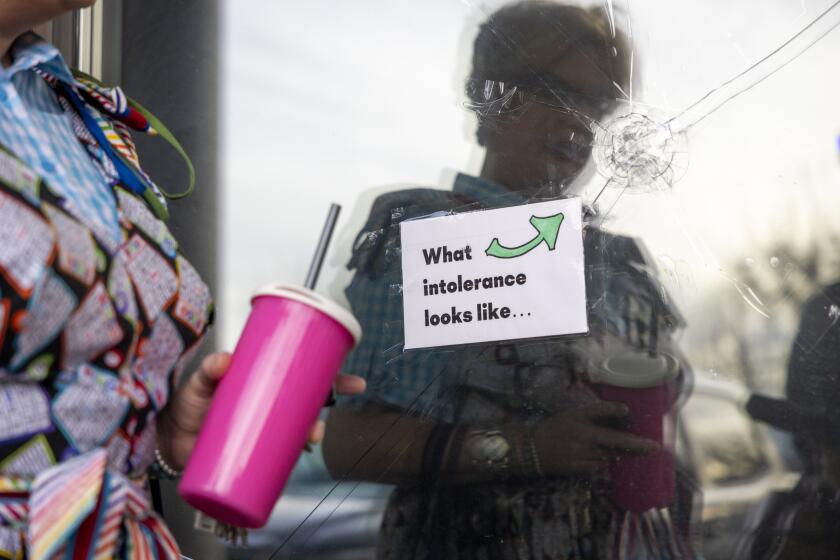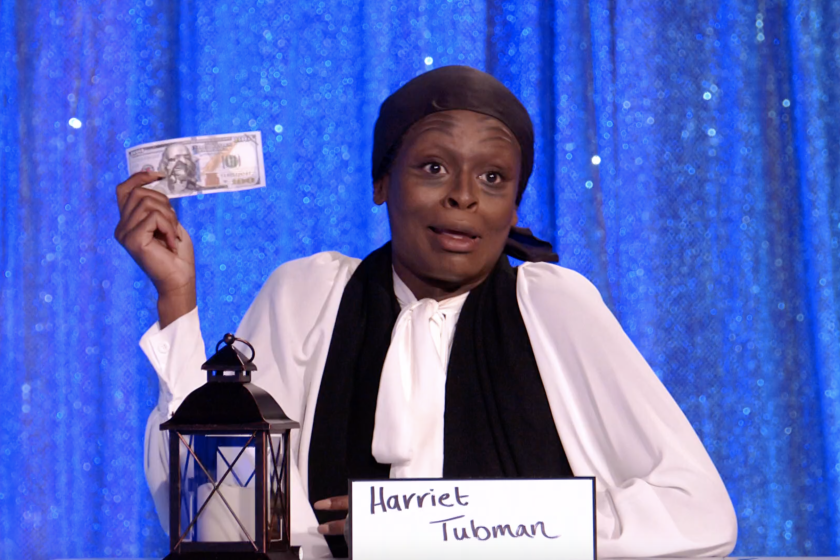How the aesthetics of drag drive the bigots mad
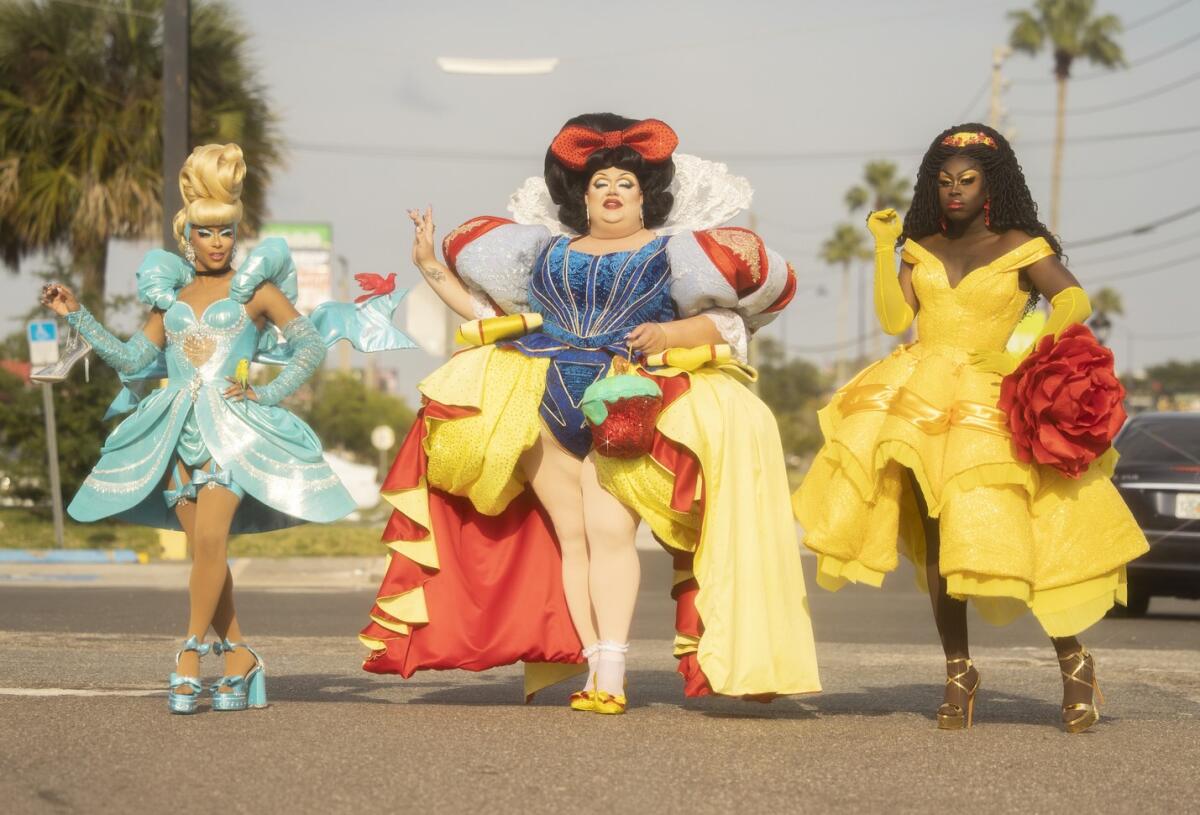
Nine GOP-led state legislatures are considering restricting or even criminalizing drag shows. It’s Gay Pride versus the Proud Boys.
- Share via
Florida Gov. Ron DeSantis is a local politician with national aspirations. Like many MAGA Republicans, he learned from former President Trump that jamming as many culture war hot buttons as possible is a surefire bet to draw the attention of a tabloid-hungry press, plus the giant social media outrage machine. Word gets out, along with your name.
Drag queens are now a hot button. DeSantis has launched state investigations against drag entertainment, and he’s even considered investigating parents via child protective services for taking their children to the shows. The smears are a subset of long-established LGBTQ hate, which seems to know no bounds, and have become a flourishing right-wing thing. A minimum of nine GOP-led state legislatures are currently angling to restrict or even criminalize drag shows, NPR recently reported.
Not all has been lost. Notable is “We’re Here,” an extraordinarily empathetic, Emmy-winning (for costumes and makeup) HBO Max program that sends three fabulous queens into some of America’s reddest neighborhoods. There, they perform a dazzling and defiant riff on the gay pride slogan, “We’re here, we’re queer, get used to it.”
After his appearance on HBO’s ‘We’re Here,’ Andrei Manila talks about the episode, his relationship with his mother and where he is now.
For the December finale of the show’s third season, Bob the Drag Queen, Eureka O’Hara and Shangela Laquifa Wadley went straight into the belly of the beast. Displaying an inspiring mix of courage and compassion, they put on an extravagant show amid the Florida constituency of aggrieved straight men (and the women who rely on them) courted by “Don’t Say Gay” DeSantis.
The desperate reaction of the authoritarian governor and his ilk shows that the aesthetics of drag are powerful. Sometimes mistakenly derided as making fun of women, drag is in reality a joke on straight men. Beneath all the face paint, padding, duct tape and wigs, weaponization of caricature, sarcasm and ridicule is elemental.
Today’s aesthetic philosophy of drag beauty and power has two principal features. One is inner-directed, determined to build self-esteem. The other aims outward, lampooning social norms that push LGBTQ people down. The two are inseparable, and together they drive the bigots mad.
The inner-directed aesthetic concerns a queen’s personal identity. RuPaul Charles, host of television’s Emmy-laden “RuPaul’s Drag Race,” a reality competition, and America’s most famous drag queen, suggested its root in his 1995 autobiography.
“We’re born naked,” the diva wrote, “and the rest is drag.”

What you wear, how you put yourself together, the ways in which you choose to present yourself — drag is a conscious outward construction representing an inner self. It might mean a man in a dress or a woman in a suit and tie. But all those signifiers of gender are ultimately costumes, regardless of who puts them on.
Once the costume is donned, being statuesque is a prized drag posture, the association with statuary more than mere coincidence. High art is invoked as a validation. Six- or eight-inch high heels do more than just accentuate the curve of a powerful queen’s calf. Sparkly shoes or thigh-high boots, balanced on ubiquitous platforms, lift her up. A “statue-like” drag queen places her constructed self on a pedestal, primed to be culturally revered. A statue is a fabricated representation in carved stone or cast bronze meant to transcend a figure’s mundane mortality. A statuesque queen breathes life into the creation — the Henry Higgins of her own Eliza Doolittle, the Pygmalion of her Galatea.
Drag queens are more mainstream than ever, as are LGBTQ rights. Yet, story hours, where drag queens read to kids, have become a point of controversy and even violence.
Self-identification through dress is hardly a revolutionary concept. (See Marlene Dietrich, Katharine Hepburn, etc.) But it takes on special meaning in the LGBTQ community, where suppression, public hostility and violence can greet the simple revelation of queer identity. Inarguable social change has happened since the gay rights movement began to stir in the 1950s. But in almost any American city or town, a happily married same-sex couple today thinks twice — or more — before walking down the street merely holding hands.
That’s where the personal aspect of drag aesthetics bumps into its other, less-often-considered feature. Drag has a profound social dimension. Patriarchy puts straight men at the top of a social pyramid. Drag queens say, “Nope.”
Drag is satire. Its nucleus is a magnificent burlesque of heterosexual male desire.
Drag comes in an array of styles, yet whatever the particular look, a queen gives special attention to hair, eyes, lips, bosom, legs, derrière and clothes — a madcap exaggeration, often to an outlandish extreme, of what turns straight men on. Rare is the queen who spends five days a week at the gym inflating masculine pecs, amplifying delts and defining abs — or, worse, ignoring altogether questions of style, anatomical or applied. Instead, traditional gender signifiers fetishized as erotic fixations by a heterosexual patriarchy are amplified to a stunningly absurd degree.
“This is what you like?” drag asks. “Here’s more. Come and get it!”
Like all good satire, only established power gets mocked. (Always punch up, never down.) The bigots might not be able to articulate this elusive quality, but certainly they feel it. They’re being — well, “dragged,” as in slang for “roasted.” The aggrieved get triggered, which is why they are now demanding censorship.
Drag queens have been at it for a long time. Notably, the first documented American drag queen, William Dorsey Swann, was a Black man born into slavery in Maryland in 1860. Journalist Channing Gerard Joseph, who has done extensive research on Swann’s tumultuous life for a planned book, reports that the fallout from the self-described Queen’s 1887 arrest at a police raid on a Washington, D.C., drag ball led Swann to court. He lost his appeal, but he initiated some of the first known resistance in the name of LGBTQ rights.
Swann, as a Black man, was accustomed to negotiating a world of white privilege, which deepened the antipatriarchy acuity of his drag aesthetic. Gay pride began there, not eight decades later during civil rights era pushback against police harassment at L.A.’s Cooper Do-nuts and Black Cat Tavern or New York’s Stonewall Inn in 1969.
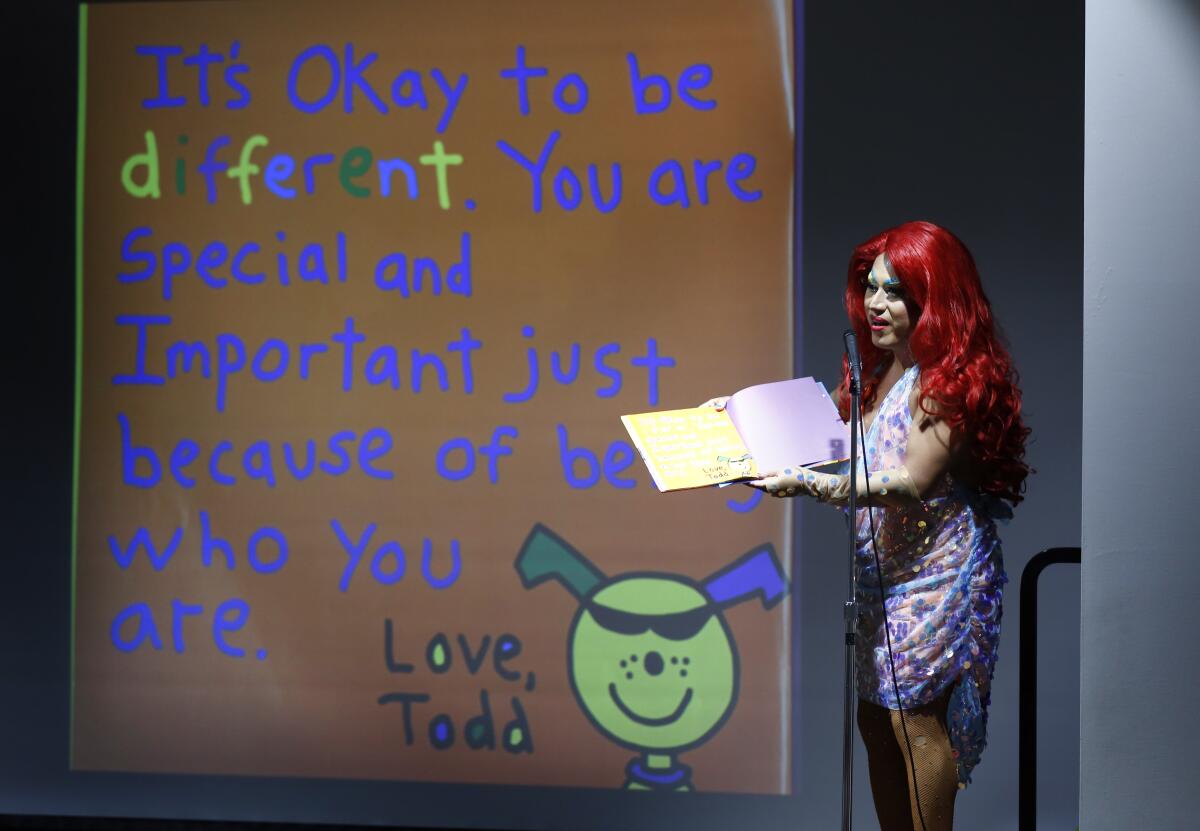
Overcoming the disfiguring social trauma that most queer young Americans experience is not easy. It takes at least as much work as assembling spectacular head-to-toe ensembles to wear at home, out to a club or onstage. Whether the look is beauty-school pageant queen, post-punk goth or any imaginable (and some unimaginable) gender-bending permutation in between, the resourceful creativity and inventiveness of drag is promoted as a resource for building an unequivocal expression — and ardent embrace — of uniquely personal identity.
But it’s also more than that. Contemporary drag is a queer division of hip-hop culture — “a means for seeing, celebrating, experiencing, understanding, confronting, and commenting on life and the world,” as explained by the Kennedy Center for the Performing Arts in Washington, D.C. Or, as the gospel-themed tagline of “Drag Race” puts it: “If you can’t love yourself, how you gonna love someone else? Can I get an a-men?”
The haters are clueless about drag aesthetics. In one stunningly preposterous case, the text of an Oklahoma bill that would ban the dress-up practice defines a drag artist as “a male or female performer who adopts a flamboyant or parodic feminine persona with glamorous or exaggerated costumes and makeup.” Well, off to the clink with Dolly Parton, Kim Kardashian, Sam Smith and the “Real Housewives” franchise, flamboyant feminine exaggerators all.
The extremist recoil is part of a larger conservative assault against queer Americans, which last year saw more than 300 anti-LGBTQ bills filed during state legislative sessions across the country, many targeting trans kids. Salacious lies about pedophilia are par for the bigoted course. The animating slander recycles the cruelty of the Save Our Children campaign, concocted by antigay Florida orange juice hawker Anita Bryant, which crashed and burned 40 years ago.
Then it was the existence of gay schoolteachers that incited baseless allegations that children were being “groomed” for sexual exploitation. Today, it’s claimed for popular library story hours at which drag queens read children’s books aloud. The reactionary response to drag’s popularity as contemporary entertainment is absurd and antidemocratic, and farcical efforts to criminalize the practice should be laughed out of every statehouse and courtroom across the country.
But here’s the thing: When it comes to drag, can we really blame the far right for at least being upset? Queasy feelings of dismay should probably be expected when you are being made fun of — and making a mockery of the conservative core belief about patriarchy as benign social organization is at the very heart of drag culture.
Only the insecure take offense. Among them count alienated MAGA voters, the fever-swamps of apocalyptic Christianity and opportunists such as Florida-based Moms for Liberty, which launched to oppose school COVID-19 mask mandates and now promotes book-banning against LGBTQ equality efforts under a guise of “parental rights.” Links with the Republican Party, forged in the 1980s during Ronald Reagan’s virulently antigay presidency, endure (the husband of a Moms for Liberty founder, for example, is vice chair of the Florida GOP).
What’s the worry? Simple: Power is being lost.
As they vie for the top prize on VH1’s Emmy-winning reality show, Gottmik and Symone discuss what makes L.A. — and its drag scene — so distinctive.
Republican voter registration continues to dwindle. According to Gallup, over the last 20 years Democratic affiliation has risen 2 points, to 30%, but Republican affiliation has fallen 5 points, to 27%. (Independents remain evenly split in the directions they lean.) Liberals now outnumber conservatives. Only the antidemocratic structure of the U.S. Senate and electoral college can keep the shaky values of minority rule in place.
Likewise, for years the Pew Research Center has been tracking the rapid decline in American religious affiliation. The share of self-identified Christians in the general U.S. population has dropped to just 63%. However, they make up 88% of the voting members of the new 118th Congress, sworn in last month. The imbalance in a 25-point difference is stark.
The trend lines are clear. Folks on the downslope are scared. Victimhood is their rallying cry; their tool is red state legislative cancel culture. In their grasping to retain power, they grind drag queens under the heel, along with trans kids and other historically marginalized citizens of LGBTQ America.
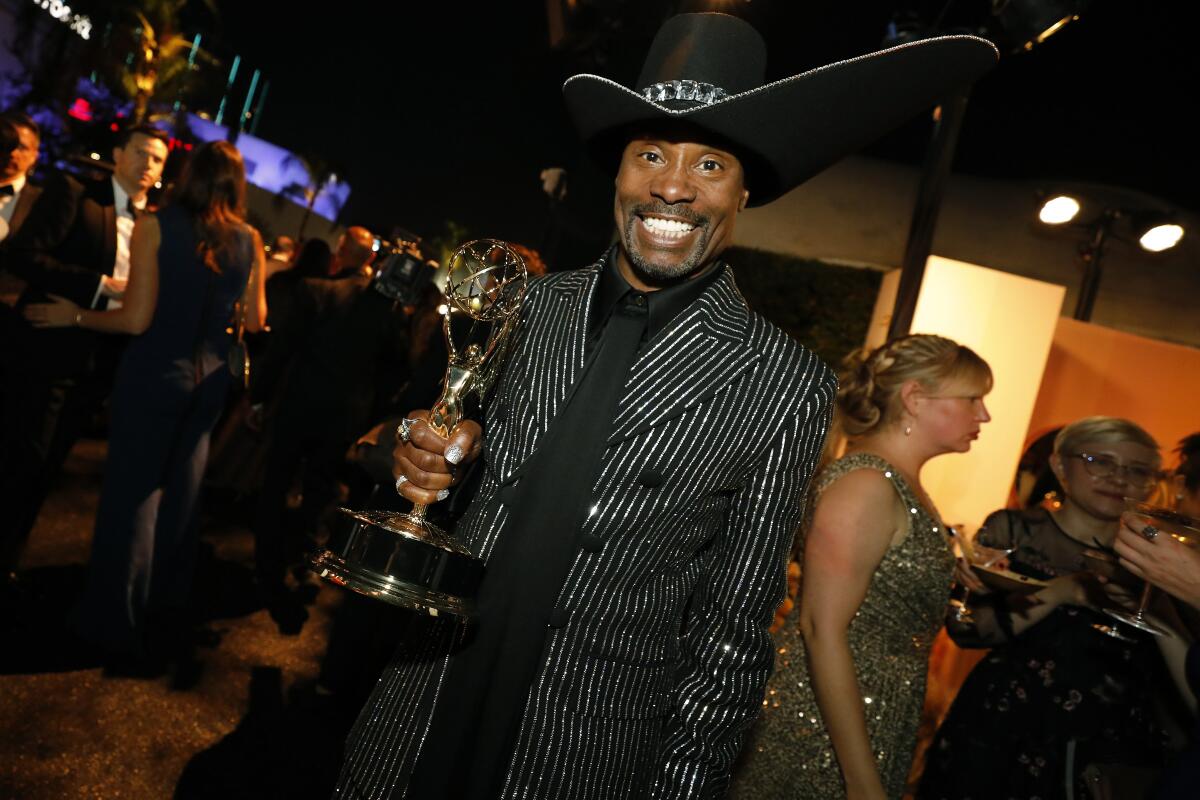
Magnifying these social and cultural shifts, drag has moved in the opposite direction — from the margins to the mainstream. Authentic male-to-female drag, not the straight, 1980s cross-dressing antics of a Tom Hanks and Peter Scolari in “Bosom Buddies” or Maxwell Q. Klinger in “MASH,” has taken its place as a celebratory mainstay in popular culture only since 2016. That’s the year Charles, the host of “RuPaul’s Drag Race,” made history in becoming the first queer man in a sequined evening gown and mile-high blonde coif to win a Primetime Emmy Award.
He would go on to reprise the success for another six consecutive years. His show began a four-year Emmy run as outstanding reality-competition program in 2018, besting repeat category stalwarts including “The Amazing Race” and “The Voice.” RuPaul is the most awarded Black artist in Emmy history. An array of franchises, spinoffs and copycats soon proliferated around the globe.
With ‘Snatch Game,’ VH1’s competition to find ‘America’s Next Drag Superstar’ submits contestants to a time-honored test. Here’s why it’s so tough.
Coincidentally, Trump’s fluke election, in which he decisively lost the popular vote, came less than two months after RuPaul’s first Emmy win. MAGA racism and misogyny, hallmarks of an archaic white patriarchy, were enshrined in the White House, soon to be exported in far-right appointments to federal courts. Suddenly, it was gay pride versus the Proud Boys. But a blast of repudiation wasn’t far behind: A year before Trump was assertively dumped by the American electorate, this time by a popular margin more than twice as large as the first one, Billy Porter collected the 2019 Emmy for lead actor in a drama for “Pose,” an FX series about the hip-hop drag ball culture documented in “Paris Is Burning,” a 1990 cult-classic film.
Porter, in his moving acceptance speech before an ecstatic standing ovation, quoted the great James Baldwin: “It took many years of vomiting up all the filth I’d been taught about myself, and half-believed, before I was able to walk on the earth as though I had a right to be here.” For the televised ceremony, Porter crowned himself with an asymmetrical, crystal-bedazzled Stephen Jones hat in the shape of a giant check mark.
Television rules the mass market, and Porter’s fabulous Emmy drag was eloquent. For some, the ineluctable transformation from margin to mainstream, outsider to insider, has made drag aesthetics a fearsome threat to an established way of life. I can only hope they are right.
More to Read
The biggest entertainment stories
Get our big stories about Hollywood, film, television, music, arts, culture and more right in your inbox as soon as they publish.
You may occasionally receive promotional content from the Los Angeles Times.
